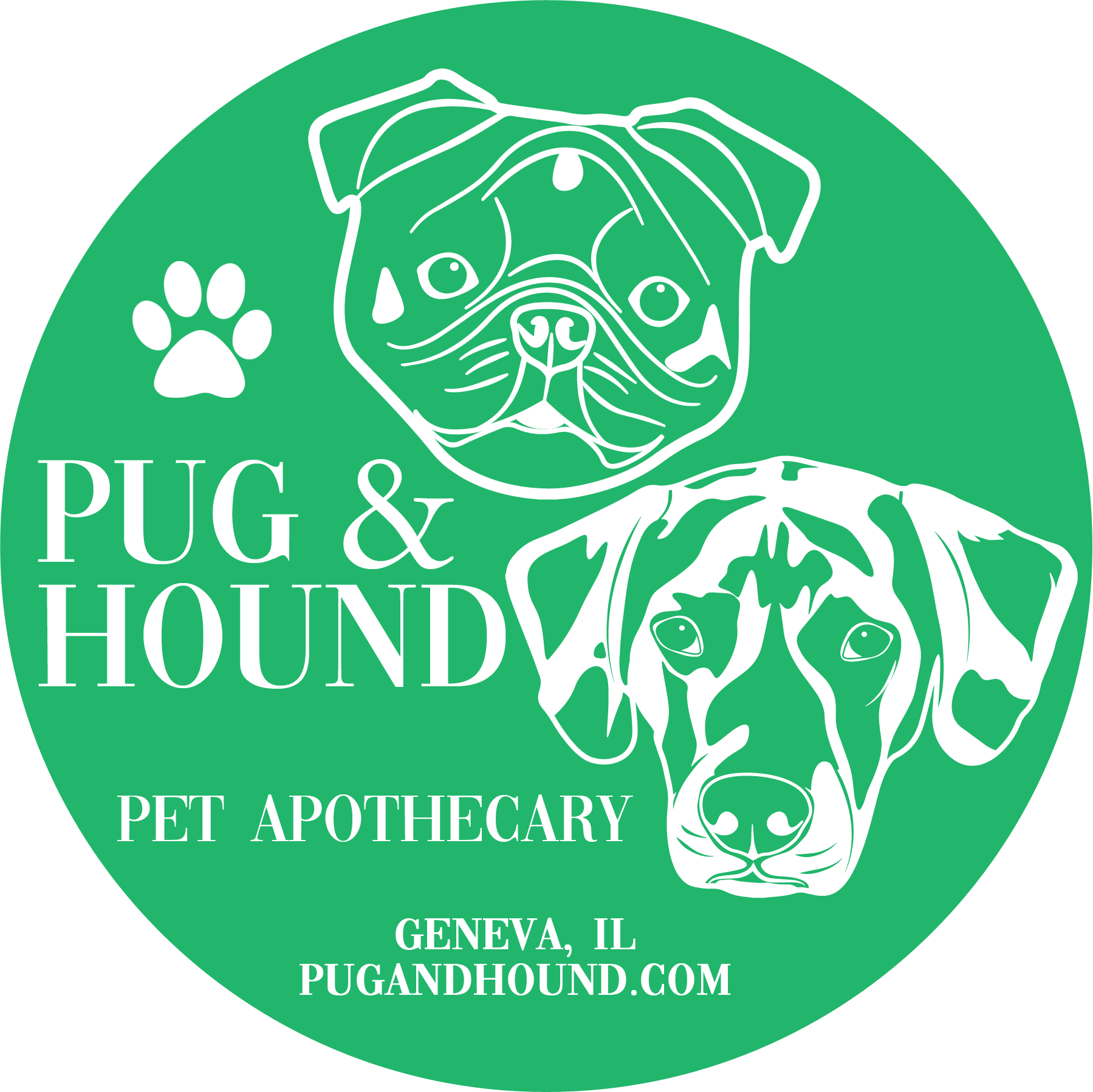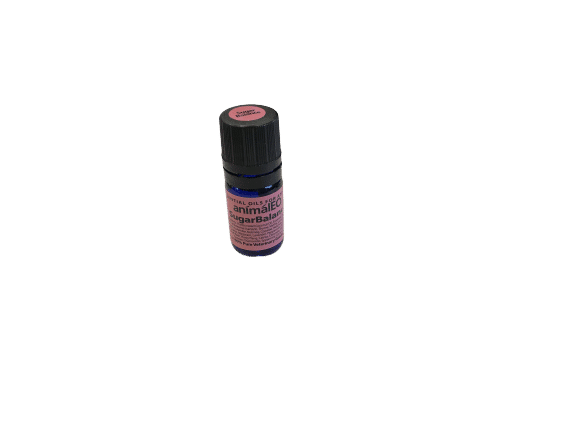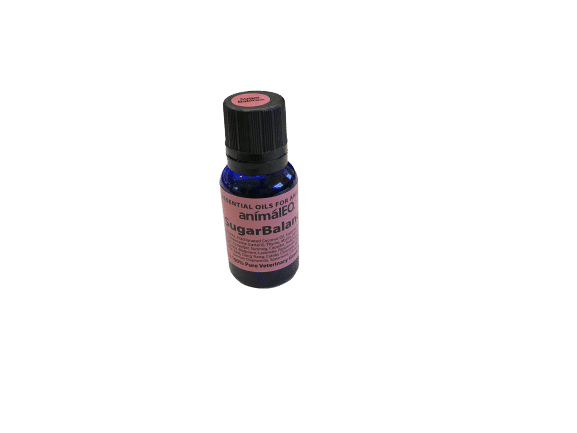A supportive blend for proper digestion, processing of energy, and sugar handling. Perfect support for those with Diabetes, Metabolic Syndrome, and more!
It is not only Diabetics who need to have better handling of their blood sugar (glucose). All animals need to manage and deal with blood sugar as part of a normal daily life – and it becomes even more important to support the normal handling and processing of blood glucose, as many of today’s diets offer calories from a variety of inappropriate sources of foods.
It is not just dogs and cats who experience “energy spikes” from diets. Horses, cattle, and other farm animals are often fed grains, pellets, or “sweet feed” – that is not necessarily normal for them. Used as an additional way to offer calories or additional nutrients – most would fare better if they were just allowed to graze on good pasture.
It is not just obesity we are concerned with – although that is certainly a problem. Many of my clients who had anxiety, nervousness, unruliness, or unrest of various emotional sorts – greatly improved when fed a species appropriate diet. Grain free and carnivorous for cats, mainly grain free for dogs, and eliminating grains and high energy foods from horses. The brain becomes super-charged on inappropriate diets – sort of like kids on sugar – and if an animal leans toward being anxious, they are even more likely to behave that way on “sugar”.
Other factors in blood sugar handling and management stem from the “dead food” issue. Today’s diets are basically void of natural enzymes – unlike “real” foods that would rot and decay with time…most of our convenience diets can sit on a shelf for many, many months before “expiring”. That is why real grass pasture, and raw diets can be very beneficial – they still contain nutrients and enzymes as they should be provided through Mother Nature. However, not many people “do” raw correctly. There are just as many pets (possibly more) who are usually set back by a poor attempt to feed raw, than there are who are helped by it (especially evident when you are a veterinarian seeing these cases!). That is why many vets will hem and haw at the concept of raw. We rarely see it done well – and we are the ones who DO see it done wrong. I have two resources that I recommend if home-prepped or raw diets are on your to-do list. First – Dr. Karen Becker’s book – Real Food for Healthy Dogs and Cats – CLICK HERE. And for raw food – I have really found that Raw Bistro – CLICK HERE – is one of the best companies who is really “doing it right”. Raw Bistro does not have their cat products out yet – but if you contact the company, they can give you more information on feeding Raw Bistro to your cat – we add this to our cat’s regime, and they do really well with it. Another book I highly recommend is Unlocking the Canine Ancestral Diet by Steve Brown. He has worked with Dr. Becker and Raw Bistro – and I consider him one of the foremost experts on natural dietary needs. During a conversation with Steve, I was happy that he was in support of my favorite Standard Process supplements as well – as I do feel that these are incredibly important to add to any diet along with Digestive Enzymes. Even if you are feeding THE MOST perfect diet in the world, it is important to recognize that your animal likely did not start out that way. Most of the time, we are changing and improving diets because there IS a health concern. So – with these facts in mind – it is unlikely that just an ideal diet alone will attend to the fact that the animal has been vitamin, mineral, and enzyme deficient for a big part of its life. Please see the page Foundation of Health for more information on diets, enzymes, and supplements for health and healing.
Holistic Advice for Diabetics
In our veterinary practice, I really did not have many diabetic patients. If the animal had been in my care, it was likely that they had already been counselled in preventive diet and lifestyle. Junk dog and cat food being fed was a rarity for my patients, and good health practices were encouraged from the very first puppy or kitten visit. Cases that were suspected to be “early” diabetics – immediately had their diets changed, supplements and supporting oils added, and their “Foundation of Health” met – before ever starting on insulin therapy. More often than not – these animals never needed insulin. Animals who did come into our practice who were on insulin shots, always had come for a second opinion from another veterinary hospital. Although we would still apply the same protocol for those on insulin – we had to watch a bit closer to make sure that our beneficial changes did not require that less insulin was needed. When starting a holistic plan for an animal on insulin – it is highly important that you work directly with your veterinarian to monitor blood sugar levels, blood glucose curves, and insulin levels being given. Many times, I describe the process as “reverse” of how you introduced insulin therapy. We start with lower doses, recheck blood glucose curves, and adjust the dose of insulin based on response. When improving the diet, adding supplements, or adding beneficial essential oils into a diabetic animals’ regimen – we have to also monitor in the same ways. But often, we are looking at the possibility of needing LESS insulin. This is why I like to start a newly diagnosed diabetic animal with their holistic changes before I start any insulin therapy when possible. I have seen just a diet change alone, result in a cat that is “no longer” diabetic. Insulin in these situations can be dangerous – because if the body no longer needs an insulin shot, and we still give it – we can cause a medical crisis.
Enter SugarBalance
SugarBalance is a Ready To Use (RTU) product – which is already diluted to a rate that most animals can tolerate easily. SugarBalance builds upon our KittyBoost formula – adding a myriad of “sugar handling” essential oils to the already amazing and supportive blend. KittyBoost, as well as SugarBalance, is not “just for cats” – read below for directions for each species.
SugarBalance can be used to support those with Diabetes, Metabolic Syndrome, Pancreatic Insufficiency, Insulinoma, obesity, poor metabolism, tendency for lipoma formation, Hypoglycemia, and basically all functions associated with the proper use of energy within the body. As essential oils work with the body to support normal levels – SugarBalance can be helpful for both high blood glucose levels as well as low. SugarBalance is still of benefit, even for animals without health issues – as it supports a normal functioning of the body.
Ingredients:
Fractionated Coconut Oil, Essential Oils of Black Cumin (Nigella sativa), Frankincense (Boswellia carterii), Thyme (Thymus vulgaris), Myrtle (Myrtus communis), Lemongrass (Cymbopogon flexuosus), Anise (Pimpinella anisum), Geranium (Pelargonium graveolens), Coriander (Coriandrum sativum), Nutmeg (Myristica fragrans), Copaiba (Copaifera officinalis), Helichrysum (H. italicum), Oregano (Oreganum vulgare), Basil (Ocimum basilicum), Cypress (Cupressus sempervirens), Marjoram (Origanum majorana), Lavender (Lavandula angustifolia), Peppermint (Mentha piperita), Fennel (Foeniculum vulgare), Myrrh (Commiphora myrrha), Lemon Basil (Ocimum citriodorum), Ylang Ylang (Cananga odorata), Catnip (Nepeta cataria), Citronella (Cymbopogon nardus), Melissa (Melissa officinalis), Dill (Anethum graveolens), German Chamomile (Matricaria recutita), Spearmint (Mentha spicata), Cinnamon (Cinnamomum zeylanica).
Cats: Cats can use SugarBalance in place of KittyBoost when desired. Some cats may already be using our KittyBoost product – and you may want to try the SugarBalance for them. When this is the case, I often recommend just using SugarBalance in the same effective methods, doses, and ways that you have already been using the KittyBoost. SugarBalance is especially indicated for cats with stress induced Hyperglycemia or Diabetes, and is helpful for overweight cats as well. If your cat is ill, you will need to have your veterinarian correct the medical issues at hand, prior to expecting essential oils to aid drastically.
Cats can usually use SugarBalance right out of the bottle, in the same methods as described for KittyBoost. However, for those of a more delicate nature – further dilution initially (as described above) is a wise start. If your cat is new to essential oils, follow the instructions on the KittyBoost page regarding application.
Alternating use of SugarBalance, LiverBoost, ThyroBalance or other body supporting “boosters” can be a great way to provide all over system support on a routine basis. For example, one of my cats gets a “boost” weekly. One week I may use SugarBalance, the following week I use ThyroBalance, and then the next week I might select CardioBoost. Each time, I am supporting a body system just a little bit more specifically – good insurance for the future in my eyes. However, for one of my cats who is a breed prone to developing hypertrophic cardiomyopathy – I may select CardioBoost more often or as my main selection. SugarBalance could be used without rotation to other formulas for animals with mainly sugar handling in mind.
Dogs: Many dogs can benefit from additional support – even if they are clinically “normal” – an occasional SugarBalance is a great idea.
For general maintenance, dogs can have an occasional application of SugarBalance for added support of maintaining healthy blood sugar processing. This application can be inserted into an AromaBoost application – generally between the #3 and #4 application – although any spot is technically okay. Use whichever schedule you are using for your AromaBoost applications – and apply the same amount of drops as you would with formulas 1-5.
You can also apply SugarBalance as a separate application unto itself – if desired. In general, 3-5 drops are applied to small dogs, around 10 pounds (4.5 kgs) and under. However, for dogs who are new to oils, or may be more sensitive – diluting your first few applications can make applications easier on your dog.
Basically, you can just drip the oils up the back and massage in, or you may apply the drops to your hands and then apply them to your dog in a Petting manner. For larger dogs – you can usually apply more drops. For medium dogs between 25-50 pounds applying 5-8 drops is average. And for large dogs over 50 pounds – a range of 6-12 drops can be used. For dogs new to essential oils – starting with even less than the recommended amounts, or with further diluted oils can be a good way to ensure you do not create an oil aversion. You may not see results with lesser amounts, or with further diluted oils sometimes, but since we are also wanting to create a “happy” situation with oil use for your dog, and not overwhelm them – the added time to slowly build up concentrations of essential oil use can be worth it.
For dogs who have been diagnosed with Diabetes – it is important that you work with your veterinarian, and monitor your dog closely with their aid. Never neglect the use of veterinary diagnostics and traditional treatments when they are indicated, and make sure to tell your vet that you are using natural substances that help support their return to full health. As you start to improve their overall health, you may find that an animal on insulin, may require less. Work with your veterinarian to determine if this change is necessary.
For my own dogs – I often rotate through several of the body specific support blends, each time I perform their “routine maintenance”. So, if my dogs get a monthly AromaBoost RTU applied – I might insert SugarBalance one month, then CardioBoost another month, and so on. However, for my patients who do have Diabetes or other digestive or sugar handling issues, I will strive to support them much more often, and regularly. In some cases, daily applications of SugarBalance can be considered – but I find that every 3-7 days is average for most dogs needing additional blood sugar handling support.






Reviews
There are no reviews yet.